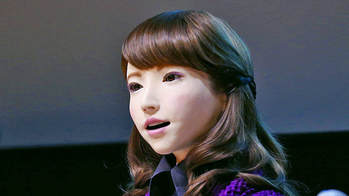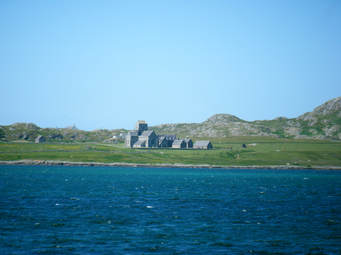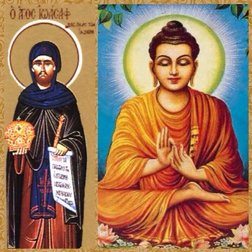 Robot Erica
Robot Erica I’ve not been able to get the image of the submarine which so disrupted the peace of the day out of my mind. If God is in all things, where is God in this? If all things are connected (as I believe they are) then I have a connection with those who support nuclear weapons and maintain them, no doubt believing they are contributing to world peace. What does it mean to be a peacemaker in the light of the arms trade and nuclear weapons? Is it enough for me to work toward peaceful co-existence with my neighbour? Does trying to generate non-violent and engaged encounters with others contribute to the overall peace in our world? I have often told myself yes, believing that the way to peace is peace, as Tich Nhat Hanh would say. I’ve liked the image of the iceberg, believing that to influence the culture around me will have an impact on lessening problems that in themselves are too big to tackle. But now I wonder. So much of our lives are dominated by government decisions that it’s hard to know how free we are to carve a society that we consider healthy, inclusive, open to the well-being of all, ready to live in good relations with others.
It’s not just because of the submarine that these questions are in my mind. I’ve just been reading Yuval Noah Harari’s book ‘Sapiens’. It’s a good and interesting read and gives an account of how our species ‘Homo Sapiens’ came to dominate over other human species, how we have evolved through a series of revolutions and are continuing to evolve through what he calls the scientific revolution. It’s what we might become in the future that’s challenging and more than a bit scary. I’ve heard before that scientists are talking about trans-humans but didn’t really know what it meant. While Harari outlines experiments which show scientists trying to replicate the human brain in a computer, substituting DNAs so that we might have the first mammoth born in five million years and a Neanderthal baby it’s the idea of robots which I find unnerving.
Harari has a sequel in which he puts forward ideas of what the future might be for homo sapiens. I’ve not yet read it but I’ve just watched a television programme about robots. There are at present nine million robots in the world and this is increasing. Many of them work in factories on production lines for cars and other goods. But many of them are being designed to replicate human beings. The most human of these robots is called Erica. She looks human, she can engage in conversation, her encounters with others build up experiences that allow her conversation to be more spontaneous and real. It raises the whole question of what it means to be human and what it means to be a robot. The programme even talks of robots being another species. This is the stuff of science fiction come true. Scientists and engineers are mechanically replicating the way the human body works so that mechanical anatomy mirrors biological anatomy. At present the robots are subject to human control though liberating them from this was mentioned. This programme was the first in a series so no doubt there will be more disturbing information before the end of the series.
While I find some of these developments scary and unnerving I’m also fascinated by them and find them really challenging. Where does religion fit into it all? Where is God in it all? Erica, the most human of the robots, said that robots would become what humans wanted them to become. Will robots enhance life or threaten our survival? As human beings we have made rather a bad show of living well together. Will it be possible for us to influence the future and growth of robots in a positive way? If we are to do so we need a conversion of heart and need it now or we will make as big a mess of the future as we have of the present.




 RSS Feed
RSS Feed
